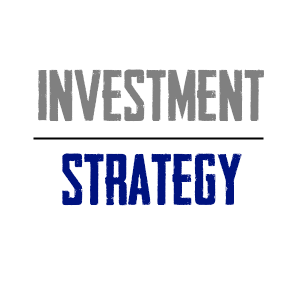One of my favorite blogs, The Monevator blog, did a brief write-up on my new paper this weekend. If you don’t read their website you’re missing out because they consistently post some of the best financial content around. Anyhow, they had a very fair and objective view of the paper and approach to portfolio construction. However, one point that I seem to lose a lot of people on is my discussion of active and passive investing. So, I wanted to take this space to clarify a bit.
Financial commentary doesn’t have a uniform definition for passive investing. Googling the term brings up the several different results:
Passive management (also called passive investing) is an investing strategy that tracks a market-weighted index or portfolio. – Wikipedia
Passive investing is an investment strategy involving limited ongoing buying and selling actions. – Investopedia
The first definition is vague because there are limitless numbers of market cap weighted indexes these days, some of which are not well diversified and not low fee. Additionally, why should passive indexing be limited to market cap weighted index? Is it really correct to say, for instance, a fund like MORT, with 23 REIT holdings, reflects passive investing better than say, the equal weight S&P 500 ETF? An “index” is a rather arbitrary construct in a world where there are now tens of thousands of different indexes.
The second definition is equally vague since an investor can hold a handful of stocks in a buy and hold strategy and limit ongoing buying and selling. Clearly, we shouldn’t call that passive investing in the sense that a low fee indexer would advocate. The new technologies such as ETFs have really muddled the discussion here as there’s now an index of anything and everything. So, as Andrew Lo notes:
“Benchmark algorithms for high-performance computing blurred the line between passive and active.”¹
Along the traditional low fee indexing thinking I am tempted to define passive indexing as any low fee, diversified & systematic indexing strategy. But that could include all sorts of tactical asset allocation strategies that have systematic allocations. I don’t think it’s appropriate to call a tactical asset allocation strategy “passive”. So we’re back to a very blurry area in this discussion.
In order to clarify this discussion I arrived at the following simple distinction:
- Active Investing – an asset allocation strategy with high relative frictions that attempts to “beat the market” return on a risk adjusted basis.
- Passive Investing – an asset allocation strategy with low relative frictions that attempts to take the market return on a risk adjusted basis.
This definition has its own problem because we have to define “the market”. Is “the market” the USA, global stocks, global bonds, etc? I’d argue that “the market” is the Global Financial Asset Portfolio, the one true benchmark of all outstanding financial assets. Therefore, anyone who deviates from this portfolio is making active decisions that essentially claim “the market” portfolio is wrong for them. This would mean that the only true “passive” strategy is following the GFAP. Obviously, not everyone does that and in fact, probably no one does it perfectly so that would mean we’re all basically active. Some people are active in silly ways (like day traders) and others are active in smart ways (diversified inactive indexers).
Of course, I am a full blown supporter of low fee, low activity indexing. So please don’t confuse this as an attack on “passive indexing”. And yes, I am admittedly being overly precise. I certainly doth protest too much as Monevator says. But I am really just trying to establish a cohesive language here because I see too many people these days claiming they’re “passive” when they’re really being quite active. The worst offenders of this language problem are high fee asset managers who sell “passive” strategies cloaked as low fee platforms. I find that dishonest and extremely harmful. A little bit of clarity in this discussion is helpful in my opinion.
¹ – What is an Index? Lo, Andrew.
Mr. Roche is the Founder and Chief Investment Officer of Discipline Funds.Discipline Funds is a low fee financial advisory firm with a focus on helping people be more disciplined with their finances.
He is also the author of Pragmatic Capitalism: What Every Investor Needs to Understand About Money and Finance, Understanding the Modern Monetary System and Understanding Modern Portfolio Construction.

